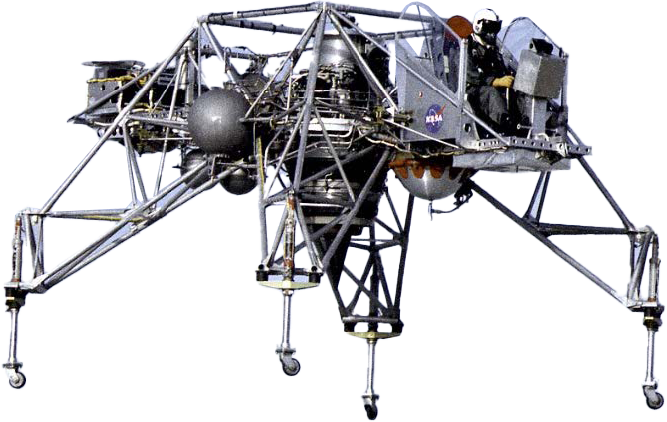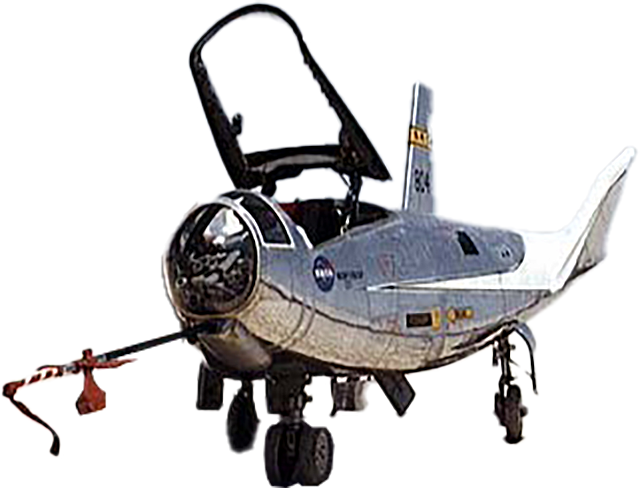The Home of the Right Stuff
“Early Jets”
A gallery that focuses on Jet development at Edwards AFB in the WWII years and the immediate post war period.
Bell P-59 Airacomet America’s first jet prototype – one of only six surviving examples worldwide. Although there were no P-59’s that went into combat, it paved the way for the next generation of U.S. turbojet-powered aircraft.

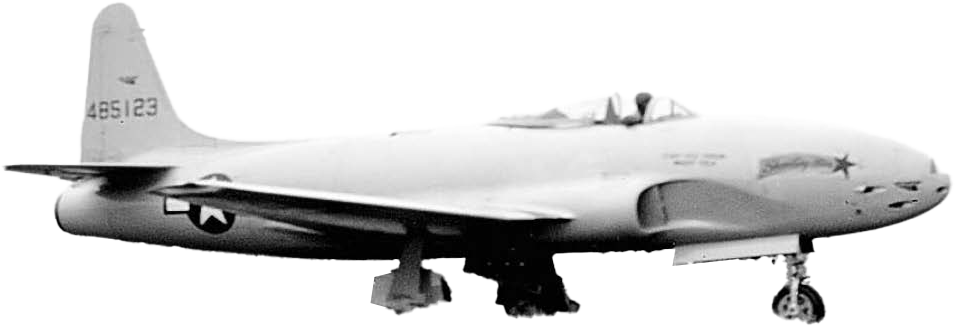
Lockheed EF-80 Shooting Star America’s first production jet. This example in the collection set the transcontinental speed record in January 1946, and closed circuit speed record in June 1946, and won the Thompson Trophy Race in September 1946.
Lockheed Starfire YF-94A #48-356 the first and only surviving example of two prototypes that were used in the development of the Starfire production series. On 16 April 1949 at Van Nuys Airport, California, test pilot Tony LeVier and flight test engineer Glenn Fulkerson made the first flight of this Lockheed YF-94 prototype, serial number 48-356. The aircraft was the first jet-powered all-weather interceptor in service with the United States Air Force and was the first production aircraft powered by an after burning engine.


Boeing YB-47 StratoJet the only surviving example of the two prototypes that were used in the production (>2,000) of the Boeing B-47. Built at Boeing Seattle as XB-47. First flight 21 July 1948 and test flown at Edwards AFB. The aircraft is the oldest B-47 in existence and the only surviving XB-47. It was returned to Edwards AFB in 2016 and is awaiting restoration. The Boeing Stratojet pioneered many of the aviation innovations used in commercial airliners.
”The Blackbirds and Stealth”
A unique collection of stealth aircraft that illustrates the development of aviation during the Cold War period (1947-1991)
Lockheed U-2D only example of a 2 seat variant (not a trainer aircraft) was used for various IR detection programs.

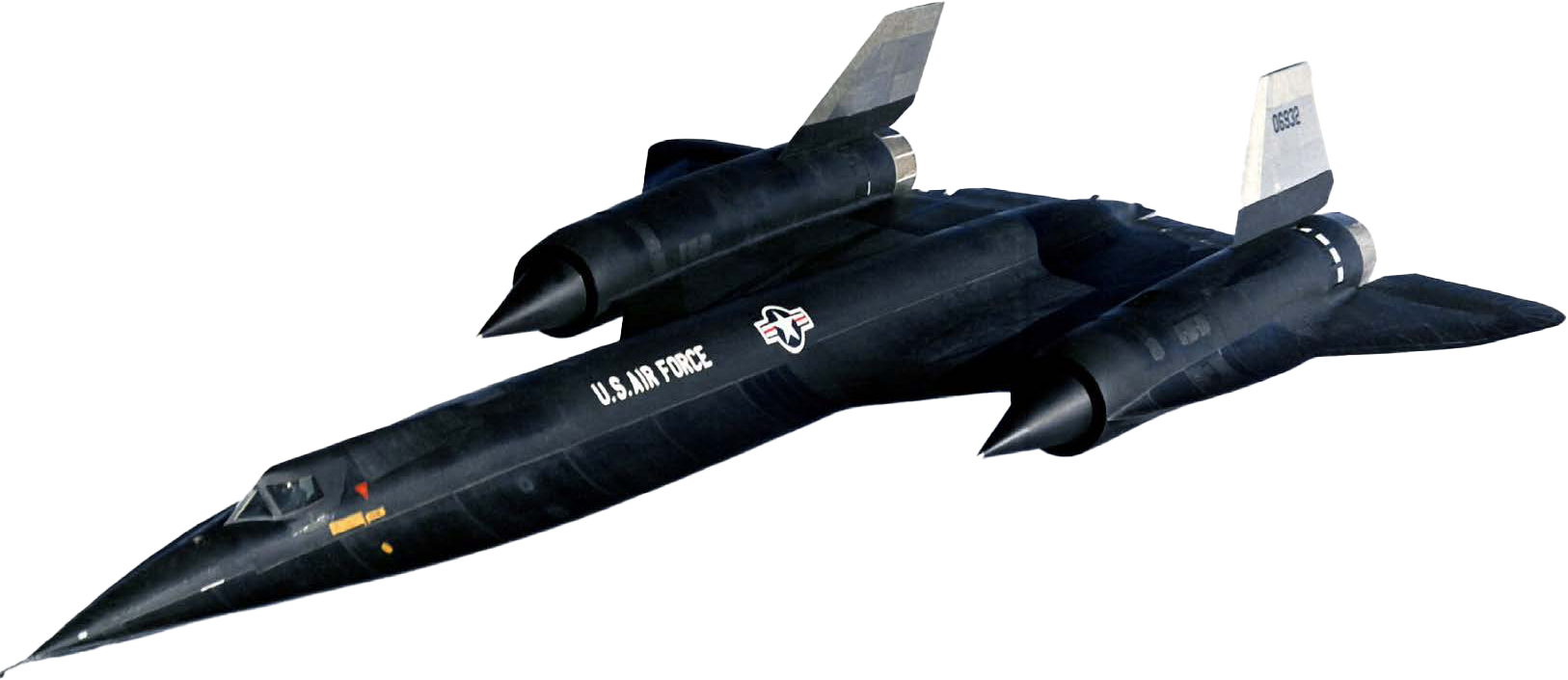
In the collection is the Lockheed A-12 serial number 60-6924. This is the first original example of the Blackbird series (Oxcart) preserved here at Edwards.
Lockheed SR-71A #61-7980 one of two SR-71’s loaned to NASA (844) for supersonic research development As such this the final example of the Blackbird series, that made the last ever Blackbird SR-71 flight on 9 October 1999.

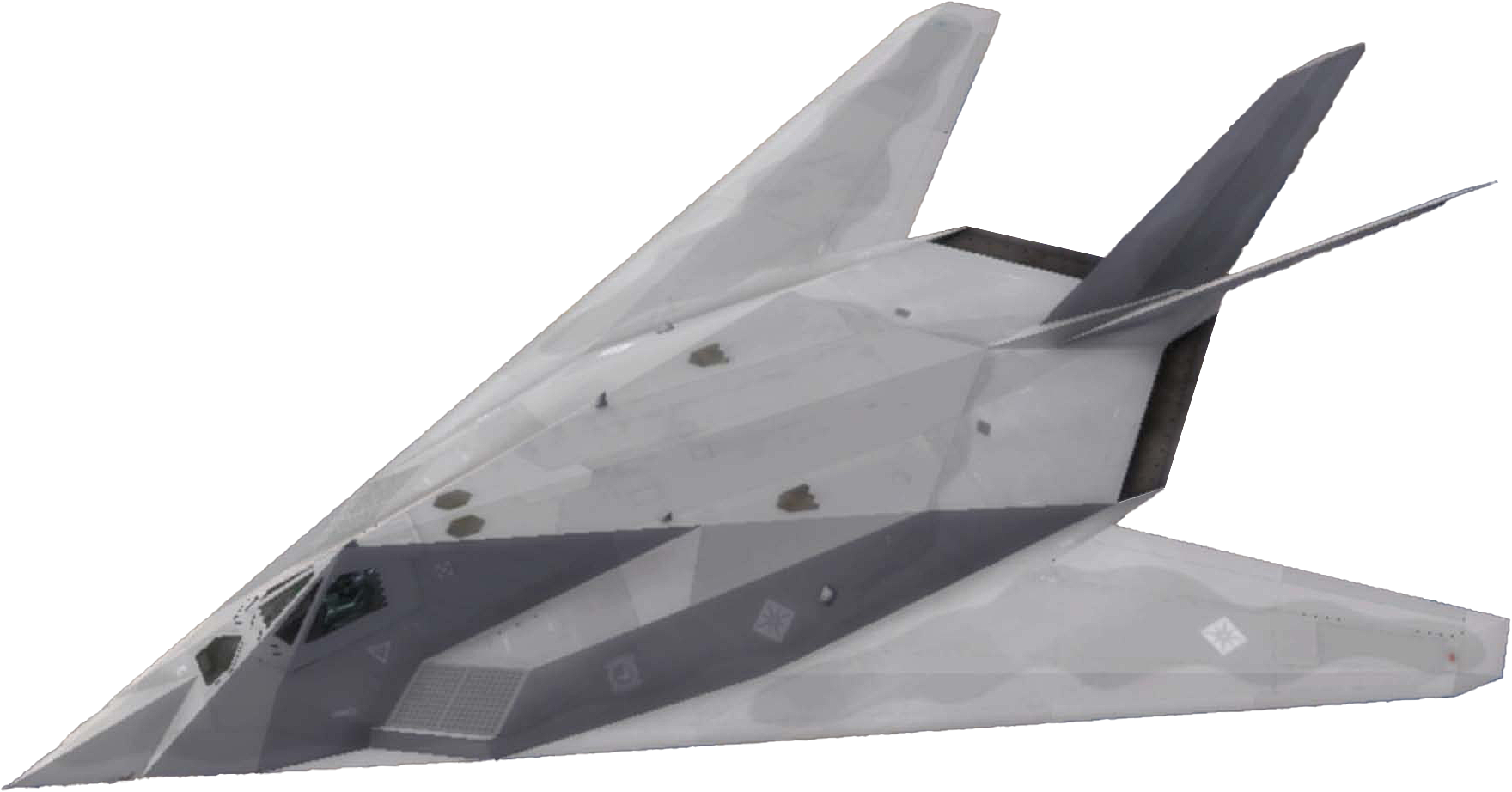
Lockheed YF-117A #79-10783 the fourth prototype “Scorpion 4” that resulted in the Lockheed F-117 Nighthawk. This prototype was flown extensively at Edwards AFB to research radar absorbing airframe coatings to develop stealth technology.
“The X Planes”
This gallery contains famous and lesser known unique aircraft that have contributed to advancements in aviation and have a unique association with Edwards AFB (home of the U.S. Air Force Test Pilot School since 1951)
Northrop X-4 #46-676, the first of only two surviving examples delivered to Muroc Air Force Base, California, in November 1948. It made its first flight on December 15, 1948, exploring the feasibility of tail-less designs for supersonic flight.


10. Bell X-1E (christened “Little Joe”) first flew on 15 December 1955, in a glide-flight controlled byUSAF test pilot Joe Walker. The only surviving example was permanently grounded after its 26th flight, November 1958, due to the discovery of structural cracks in the fuel tank wall. It was used as a backdrop for the 1960’s TV series “I Dream of Jeannie”
X-36 Tailless Fighter Agility Research Aircraft. The NASA/Boeing X-36 Tailless Fighter Agility Research Aircraft demonstrated advanced technologies to improve the maneuverability and survivability of possible future fighter aircraft. The first flight of the remotely piloted aircraft occurred on May 17, 1997, with the final flight closing the original program on Nov. 12, 1997. The aircraft reached an altitude of 20,200 feet and a maximum angle of attack of 40 degrees.


X-48 Blended Wing Body. The 8.5%-scale, remotely piloted X-48B was developed to study the structural, aerodynamic, and operational advantages of the blended wing concept, a cross between a conventional plane and a flying wing design. The follow-on upgraded modified version was designated the X-48C Hybrid/Blended Wing Body and demonstrated technology concepts for cleaner and quieter commercial air travel.
Grumman X-29 one of only two X-29s flight tested by NASA through 1991. The aerodynamic instability of the X-29’s airframe required the use of computerized fly-by-wire. The Grumman X-29 was chosen by the Flight Test Museum as its “signature aircraft” to represent the unique contribution made to aviation, that continues today, at Edwards Air Force Base.

“The Protypes”
A gallery of the Y series aircraft – the first full-scale and functional form of a new type or design.
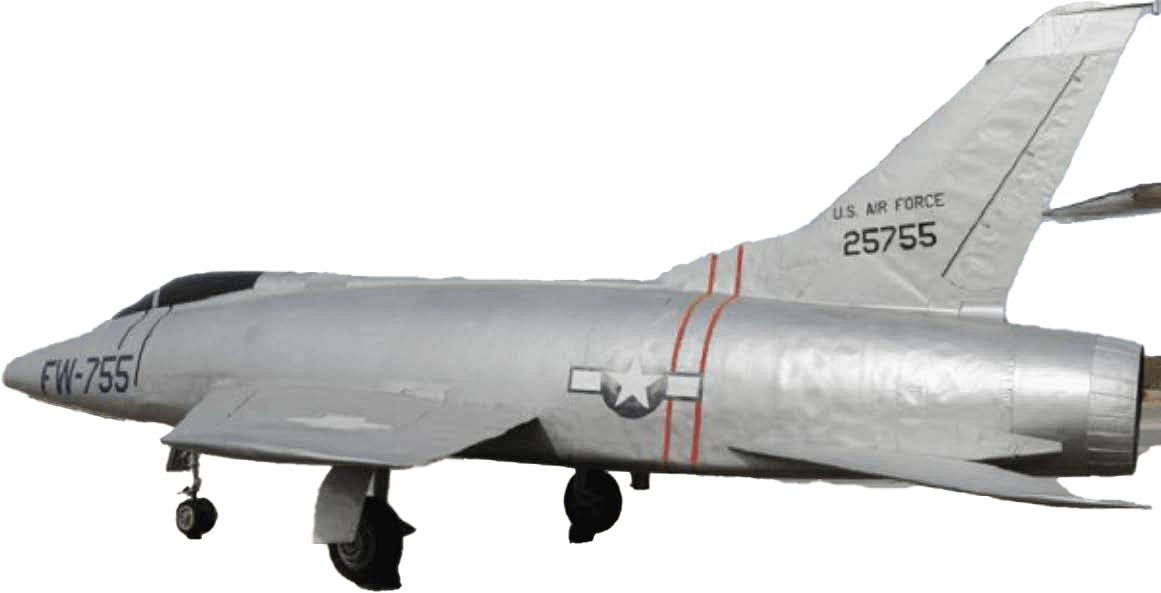
North American YF-100A Supersabre s/n #52-5755, first of the Century Series jet fighters, it was America’s first fighter capable of supersonic speed in level flight. The prototype YF-100A made its initial flight on 25 May 1953, and the first production aircraft was completed in October 1953. This North American YF-100A was the second of two prototypes built, making its first flight in October 1953. It is the oldest Super Sabre in existence. The aircraft was on display on a pedestal at Keesler AFB, MS, for over 35 years and was acquired by the Flight Test Museum in 2001. It was restored by the 412th Test Wing Surfaces team in 2007.
Vought Strikefighter YA-7A # a prototype transonic attack aircraft based on the subsonic A-7 Corsair II. The second of two prototypes the YA-7F was not ordered into production, its intended role being filled by the F-16 Fighting Falcon.
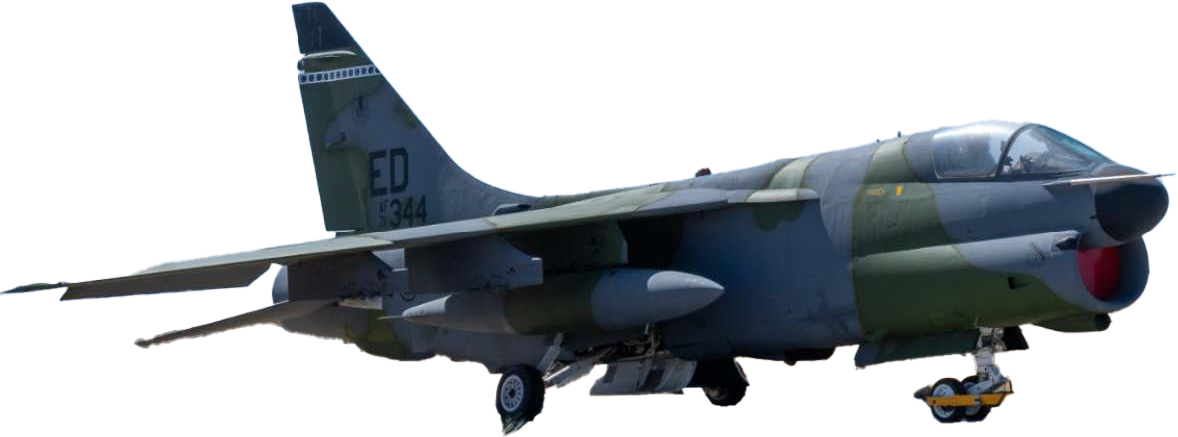

General Dynamics F-111 Aardvark #63-9766 the first prototype of the production variable-geometry wing aircraft. It was a medium-range interdictor and tactical strike aircraft that also filled the roles of strategic bomber, reconnaissance, and electronic warfare in its various versions. Developed in the 1960s it first entered service in 1967 with the USAF. The museum’s YF-111A, S/N 63-9766, was the first F-111A built. The aircraft first flew on 21 December 1964 from Carswell AFB, Texas. Its entire service career was spent at Edwards, where it performed the full spectrum of flight tests.
Douglas A-3 Skywarrior YA3D-1 (YA-3A) is a jet-powered strategic bomber that was designed by Douglas on behalf of the United States Navy, which sought a carrier-capable strategic bomber. This example is the pre-production prototype with Pratt & Whitney J57 engines. It was later used for tests at the Pacific Missile Test Center and restored in September 2011 by members of Naval Air Reserve Patrol Squadron 65 (VP-65) based at Naval Air Station Point Mugu.
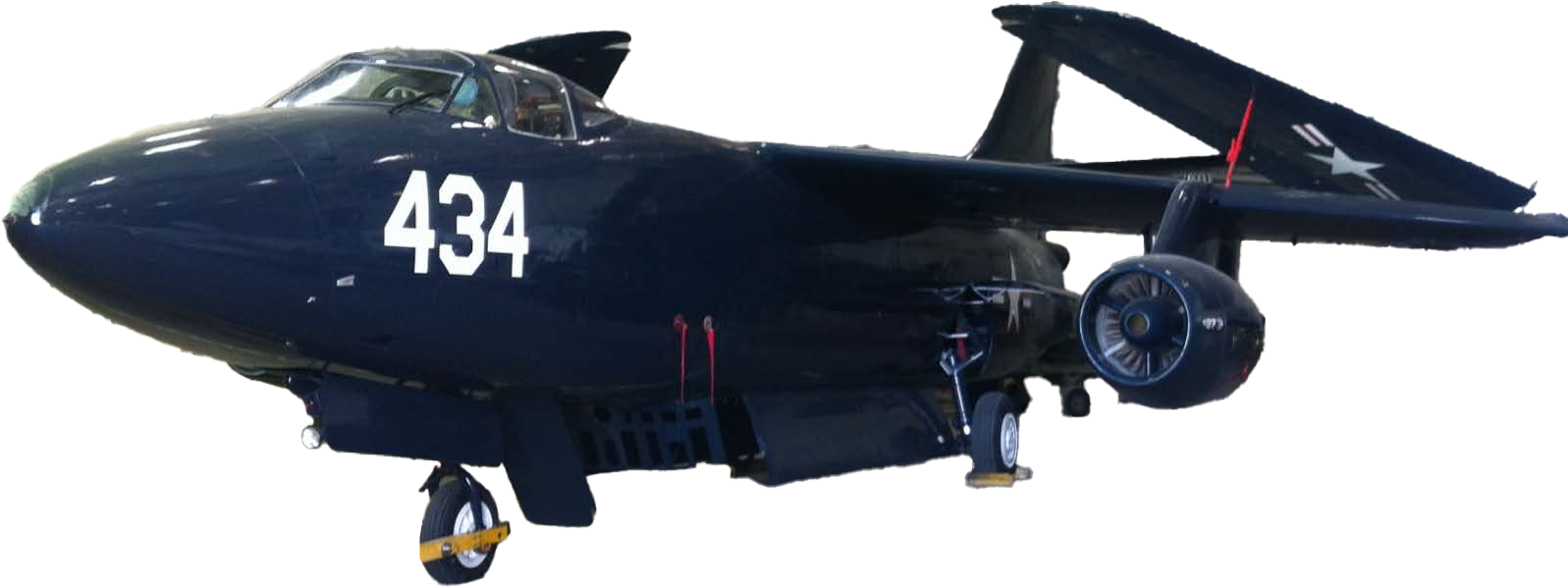
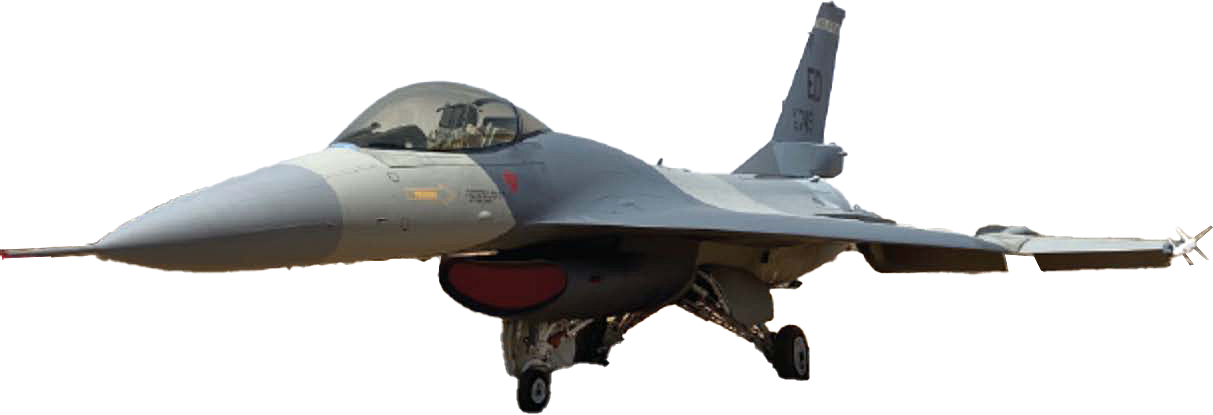
General Dynamics F-16XL is a unique derivative of the F-16 Fighting Falcon with a cranked-arrow delta wing. It entered the United States Air Force’s (USAF) Enhanced Tactical Fighter (ETF) competition in 1981 but lost to the F-15E Strike Eagle. The two prototypes were turned over to NASA for additional aeronautical research in 1988. Both aircraft were fully retired in 2009 at Edwards Air Force Base.
Lockheed Martin Raptor YF-22A PAV-1, S/N 87-0700 first of two prototype designs – a finalist in the USAF’s Advanced Tactical Fighter competition won the contest against the Northrop YF-23, and was developed into the Lockheed Martin F-22 Raptor. The YF-22 has a similar aerodynamic layout and configuration as the F-22, but with differences notably in the larger tail fins thought to be necessary for spin control.

“The NASA Gallery”
The Neil A. Armstrong Flight Research Center, located at Edwards Air Force Base, is NASA’s premier site for Aeronautical Research, operating some of the most advanced aircraft in the world.
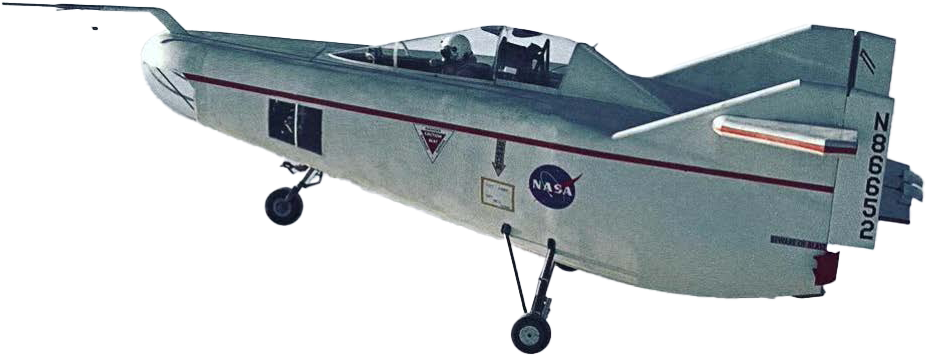
NASA M2-F1 was a lightweight, unpowered prototype aircraft, developed to flight-test the wingless lifting body concepts. In 1962, NASA Dryden management approved a program to build a lightweight, unpowered lifting-body prototype. Construction was completed in 1963.
21. The Lunar Landing Research Vehicle or LLRV was an Apollo Project era program to build a simulator for the Moon landing It was used at Edwards Air Force Base, California, to train astronauts and study techniques needed to fly and land the Apollo Lunar Module on the Moon.
